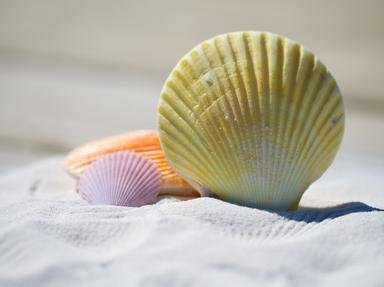Quiz Answer Key and Fun Facts
1. Where would you be most likely to find a cone snail?
2. How does a cone snail inject venom into its victims?
3. Which of the following cone snails is the deadliest?
4. Which two colours are displayed on the shell of the marbled cone snail?
5. The feathered cone snail is listed as being dangerous to humans.
6. There are well over six hundred known species of cone snail.
7. Do cone snails lay eggs?
8. Marbled cone snails produce the same type of venom as which other creature?
9. Do cone snails have any predators?
10. What should you do if stung by a cone snail?
Source: Author
ElusiveDream
This quiz was reviewed by FunTrivia editor
Tizzabelle before going online.
Any errors found in FunTrivia content are routinely corrected through our feedback system.


